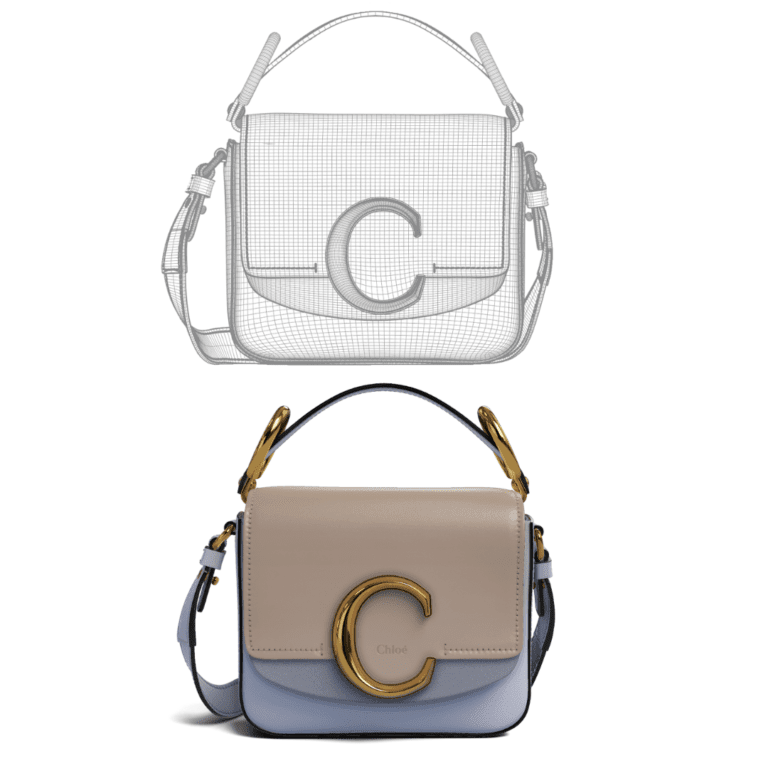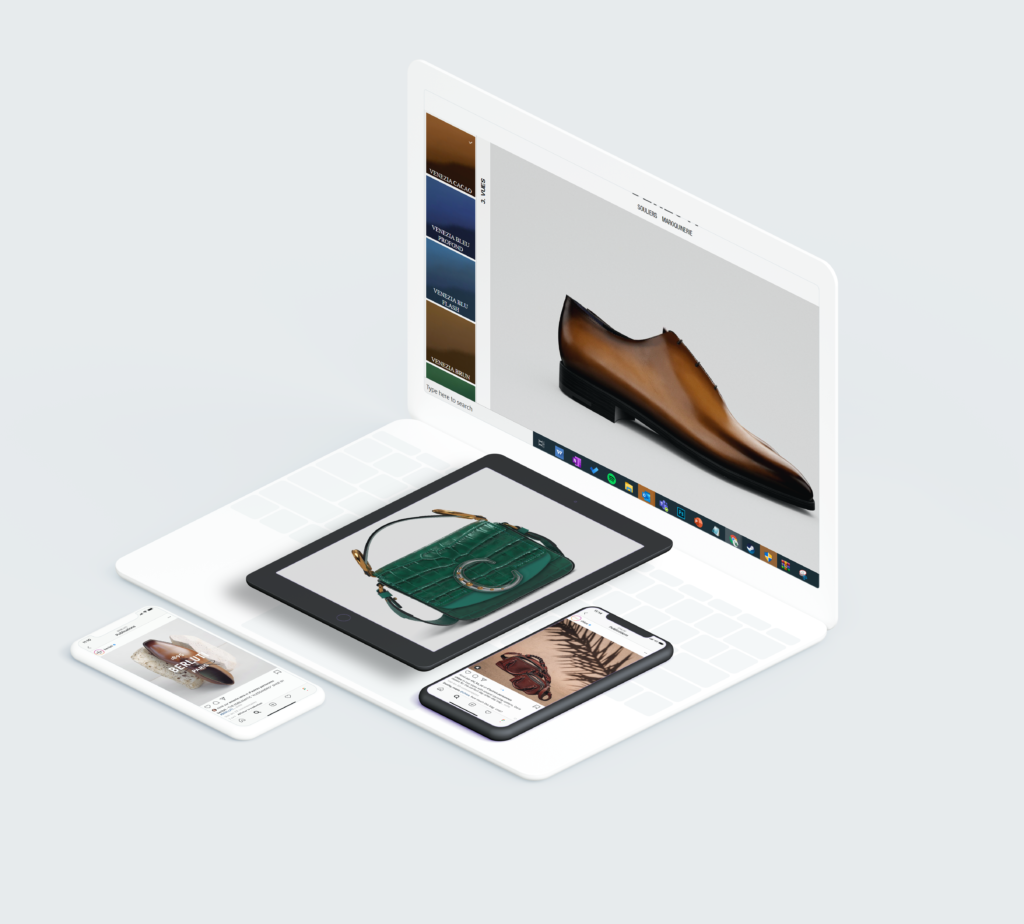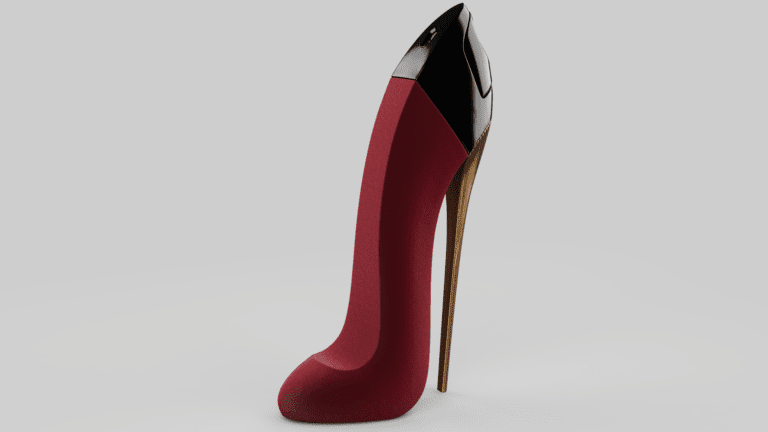The importance of 3D configurators for customer experience in the luxury industry
The importance of 3D configurators for customer experience in the luxury industry Table of Contents In the luxury industry, where attention to detail, exclusivity, and

The process of converting information from a 3D model into a 2D image is known as 3D rendering. 3D product renderings are subjected to a wide variety of applications. To illustrate, at SmartPixels we create highly effective 3D models of our customers’ products, which are extremely useful to enrich their website pages.
The first step to creating hyperrealistic 3D visuals is the digitalization of a product in 3D. The first step consists in the scanning of the physical product, to obtain the geometry of the item itself. Subsequently, during the 3D modelling phase, the graphic designer and 3D artist teams to work on the “wireframe“, also called “point cloud“, extracted from the 3D scan.
Their role is to make the 3D product visuals as realistic as possible. To perform this operation, they exploit texturing and lighting techniques. As a consequence, the overall product’s appearance is considerably improved. In this way, it can meet and even exceed the rising expectations of customers. They will even struggle to differentiate a photo from a 3D rendering!
Buying is visual. As a consequence, one of the major implementations of 3D renderings is e-commerce. In fact, many fashion and luxury brands rely on 3D digitization services to enrich the customer purchase experience on their different sales channels.
Luxury brands, exploit these visuals as an alternative to traditional product photography. Due to the high level of realism and engagement, 3D rendered images proved to be useful tools for brands to increase customers’ satisfaction.

Statistics forecast that the e-commerce industry will grow by $11 trillion between 2021 and 2025 [1]. As companies moved online all through the COVID-19 global epidemic, the worldwide digitization trend accelerated at a breakneck pace.
The e-commerce landscape is characterized by rising competition. By the end of this year, e-commerce will count for 20.4% of global retail sales, up from 10% only five years ago [2]. Therefore, brands are struggling to obtain consumers’ attention.
Aside from being a critical weapon against the competition, visual commerce, with the implementation of 3D visuals, has become an essential component of the online shopping experience. Relying on receiving consumers in-store, or persuading them to purchase with static images, no longer works.
To continue attracting shoppers, online retailers must develop user-engagement strategies and technologies.
Among these strategies, 3D visualization and 3D product renderings are on the frontline. These solutions can improve the user experience by allowing buyers to visualize and personalize items in an ultra-realistic way, before clicking the “checkout” button.
3D customizable product rendering realized by SmartPixels for FURLA
3D product renderings are becoming an integral part of brands’ e-commerce strategies, especially within the luxury industry.
Photorealistic 3D renderings are particularly useful to attract, engage and influence potential customers. They are increasingly used by brands to enrich the product pages of their websites.
Here there are three of the main applications of 3D visuals :
• 3D rendered images for a catalog: Fashion and luxury brands’ e-commerce provides their end customers with thousands of products. Each of them needs to be displayed in an accurate visual manner. Traditional product photography takes a huge amount of time and endeavor. On the contrary, once your product has been modelled in 3D, brands are able to generate thousands of product visuals just in a few clicks. Moreover, it is possible to visualize 3D items in a 360° mode. This option showcases to clients even the tiniest of details, increasing their purchase confidence.
• Augmented Reality for e-commerce: Augmented Reality allows shoppers to project products through realistic 3D visualisations into the real world. The use of AR is widespread in sectors such as leather goods, shoes and timepieces. To develop Augmented Reality solutions, brands need 3D renderings of their products, possibly in glTF format.
• 3D rendered images for product personalization:The utilization of a 3D configurator for e-commerce allows to personalize products in a fun and engaging way. An interactive 3D configurator gives shoppers the ability to change the shape, colour and materials of a product, add staging while viewing the 3D rendering that changes in real time.

2/3 static visuals do not meet rising consumers’ expectations while shopping online. These days, the younger generations are seeking for interactive and immersive products’ visualization. In fact, thanks to high-quality visuals generated by 3D visualization, online product pages can reach a higher level of dynamism.
• Higher-conversion rates: SmartPixels’ 3D renderings enhance our clients’ web pages. We have estimated that brands replacing traditional product photography with 3D renderings have achieved a 40% increase in conversion rates and an augmentation of approximately 30% in sales.
• Consumer engagement: 2D e-commerce visuals do not make buyers engage with products. On the contrary, a 360-degree view, Augmented Reality, and 3D configuration keeps customers involved in the purchasing process. Customers can personalize their products in 3D and feel more connected to them. Therefore, customer satisfaction rises considerably.
• Lower returns: from 20 to 25% of fashion online purchases are returned directly to the brand [3]. One of the main reasons is the divergence between the appearance of products in real life and online. Creating photo-realistic 3D renderings, where each single detail can be zoomed in and out, drastically reduces the chances of errors during purchase. Avoiding surprises at the product’s receipt through better product visuals can significantly reduce product returns.
SmartPixels’s’ 3D application lets consumers view a single product in details, viewing it from any perspective and with a high level of accuracy. This allows buyers to be more confident while purchasing; 3D renderings removes barriers to purchase, both if customizable, both if just displayed in the product catalog in an appealing manner.
*Sources:
[1] ttps://f.hubspotusercontent10.net/hubfs/2617219/The%20ZigZag%20Global%20Retail%20Returns%20Study%202021.pdf
[2] https://www.shopify.com/research/future-of-commerce/future-of-ecommerce#:~:text=Global%20ecommerce%20sales%20are%20expected,ecommerce%20sites%20across%20the%20globe.
[3] https://www.forbes.com/sites/forbestechcouncil/2022/03/14/e-commerce-trends-2022-what-the-future-holds/?sh=5f4816db58da
The importance of 3D configurators for customer experience in the luxury industry Table of Contents In the luxury industry, where attention to detail, exclusivity, and
3D rendering vs 2D: what are the benefits of one over the other? Table of Contents 3D rendering offers a significant leap in realism compared
How do 3D product configurators reduce e-commerce returns? Table of Contents Overview of e-commerce product returns % of people who claim to retunr their online
Omnichannel strategy: the keys to a successful experience Chloé Tokyo store with a personalization experience created by SmartPixels The global pandemic has forced brands around
How AR helps luxury brands to build immersive experiences What is Augmented Reality? Augmented Reality solution by SmartPixels Augmented Reality is a technology that enables
Deep-dive into glTF file format During recent years, the glTF file format has gained more and more prominence, due to its functionality and the wide variety